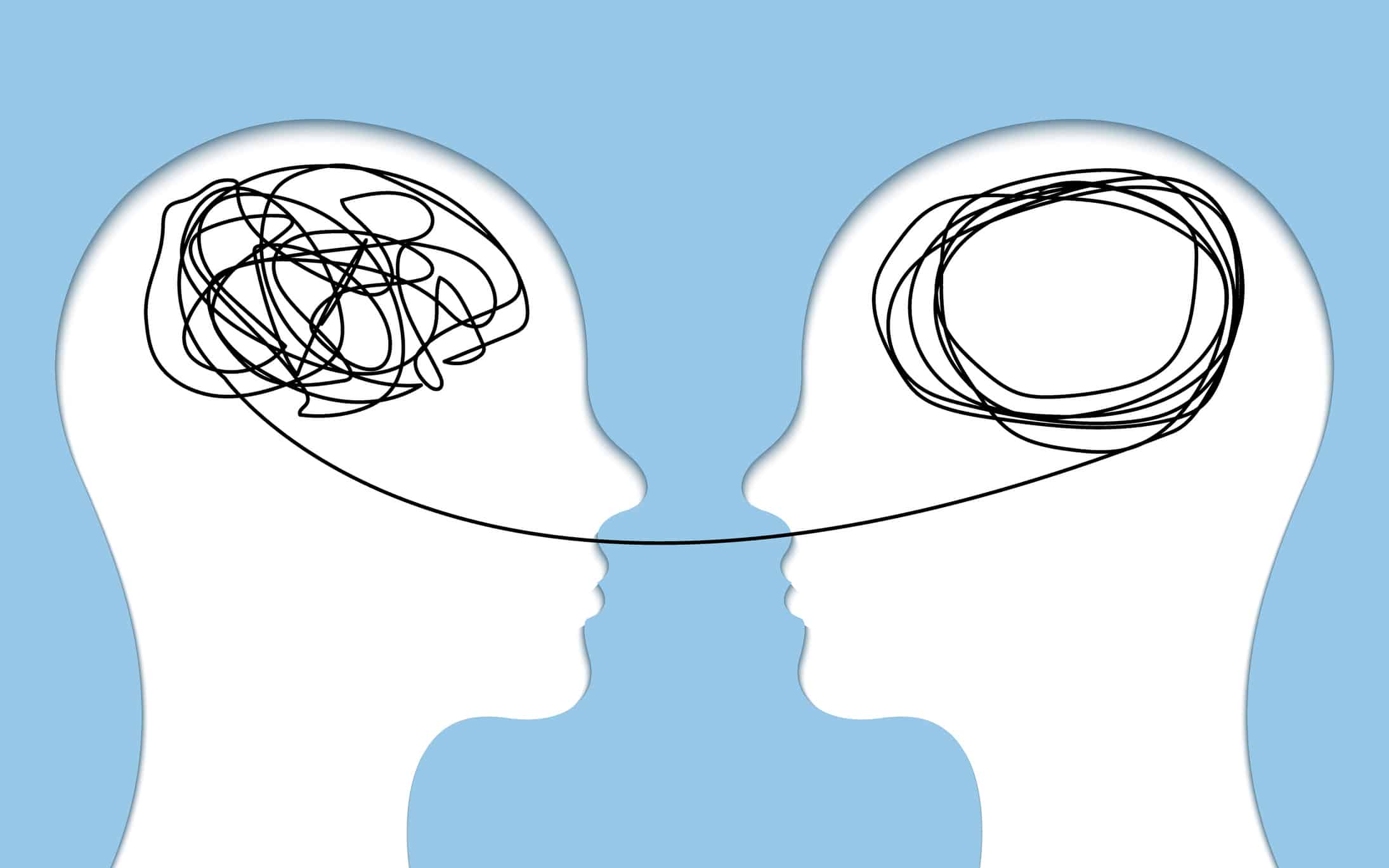Personality disorders in teens develop in childhood and adolescence, and benefit from early detection and treatment. But unlike in adults, it can be more difficult for parents to differentiate telltale signs of emerging personality disorders from “typical teenage behavior”. We expect adults to be more “in control” of their behavior and accept teens sometimes push the limits of what is accepted or expected to learn more about themselves and the world around them.
But when a teen’s behavior hints at a potential personality disorder, early treatment can be the key to developing the necessary coping mechanisms to help them lead fulfilling and happier lives. Left undiagnosed or misdiagnosed, a personality disorder can turn a person’s life upside down, ruining relationships and career opportunities, and isolating them from those who love and care for them. And the longer such a condition develops – especially in the growing mind of a teenager – the more difficult it can be to treat.
Understanding Teen Personality Disorders
Personality disorders in teens are a series of conditions characterized by thinking and behavior that deviates quite extremely from the norm, to the point it causes long-term distress over months and years, and affects day-to-day functioning across multiple settings (home, school, work, etc). Teen personality disorders are complex and often difficult to diagnose due to overlapping symptoms with typical adolescent behaviors. A personality disorder is more than just a strange character trait or an annoying quirk.
A teen diagnosed with an emerging personality disorder is consistently experiencing thoughts (and thereby engaging in behavior) that are dangerous, unacceptable, and/or unhealthy, and that remain rigid and unchanging even in the face of earnest disapproval and multiple adverse experiences. This isn’t their fault. It is a mental health condition often developing as a result of both internal factors (genetic likelihood) and external factors (life experiences and traumatic situations).
Types of Personality Disorders
Personality disorders in teens do not always fit a textbook definition, but years of accumulated research and learning in the field of psychiatry has helped develop three distinct clusters within which most cases fall. These clusters each have their own set of different diagnoses based on very distinct key behaviors and patterns, but individual cases may come with their own unique elements or quirks.
Ultimately, these definitions can help us understand how and why certain thoughts lead to resulting behaviors, but it’s important to know that any one teen will require a wholly individual profile and treatment process. The three main clusters of personality disorders are:
Borderline Personality Disorder is also known as Emotionally Unstable Personality Disorder due to the significant emotional instability and challenges in maintaining relationships.
Cluster A – Odd, Magical or Eccentric
Cluster A personality disorders are characterized by “magical” or odd thinking, and examples of strange or distorted perceptions of reality, paranoia, or erroneously seeing connections or patterns where there are none. The three personality disorders in Cluster A are:
- Paranoid Personality Disorder: Characterized by consistent paranoia and unjustified suspicion, as well as aggressiveness in response to perceived or misinterpreted insults.
- Schizoid Personality Disorder: Characterized by a detached and seemingly emotionless state, lack of interest in other people romantically or sexually, and little to no emotional expression.
- Schizotypal Personality Disorder: Characterized by odd and peculiar thinking, superstition, belief in magical occurrences or concepts, and strange or unnatural experiences (including auditory hallucinations).
Cluster B – Overly Dramatic or Unpredictable (e.g., Borderline Personality Disorder)
Cluster B personality disorders are characterized by impulsive and/or dramatic behavior, intense interpersonal conflict, or issues with empathy. The four personality disorders in Cluster B are:
- Antisocial Personality Disorder: Characterized by “antisocial behavior”, particularly repeatedly disregarding other people’s feelings and needs, unwarranted aggressiveness, lack of remorse, and impulsiveness.
- Borderline Personality Disorder (BPD): Characterized by pervasive and repeated instability in mood and behavior, borderline personality disorder is named such because its definition evolved over decades, starting out as a condition on the “borderline” between other conditions. Other characteristics include threats of suicide, signs of depression, significant ups and downs, risk-taking behavior, and outbursts.
- Histrionic Personality Disorder: Characterized by attention-seeking behavior, including grand displays of emotion and provocative behavior, such as inappropriate or sexually-suggestive behavior. Other symptoms include repeatedly and consistently making grand statements with little to no substance and being overwhelmingly shallow with one’s thoughts and opinions.
- Narcissistic Personality Disorder: Characterized by an overwhelming sense of self-importance, delusions of grandeur, extreme arrogance, and aggressiveness in response to any perceived threats to one’s superiority. Narcissistic personality disorder is also characterized by extremely manipulative behavior, and a failure to recognize anyone else as special or worth respecting.
Cluster C – Anxious or Fearful
Cluster C personality disorders are characterized by intense anxiety and fearful thinking, avoidance, or excessive dependence. The three personality disorders in Cluster C are:
- Avoidant Personality Disorder: Characterized by a crippling level of fear regarding interpersonal contact and social perception, including fear of disapproval and ridicule in every setting, and constant feelings of inadequacy.
- Dependent Personality Disorder: Characterized by a level of dependence that interferes with normal, everyday function, including being unable to start or continue projects or endeavors alone, lacking any form of self-confidence, and immediately starting new relationships when old ones break down.
- Obsessive-Compulsive Personality Disorder (OCPD): Not to be confused with obsessive-compulsive disorder (OCD), OCPD is a personality disorder characterized by an incredibly rigid ruleset, extreme perfectionism, and desire to be in control always.
Warning Signs and Symptoms
Recognizing the warning signs and symptoms of personality disorders in teens can be challenging, as these behaviors often overlap with typical adolescent development. However, certain patterns may indicate a deeper issue that warrants professional attention. Common signs and symptoms include:
- Unstable Relationships and Intense Emotional Dysregulation: Teens may struggle to maintain stable relationships, experiencing intense and rapidly shifting emotions that can lead to frequent conflicts and misunderstandings.
- Impulsivity and Reckless Behavior: Engaging in risky activities without considering the consequences can be a red flag. This might include substance abuse, reckless driving, or other dangerous behaviors.
- Self-Destructive Behaviors and Suicidal Ideation: Persistent thoughts of self-harm or suicide, along with actions that put the teen in harm’s way, are serious indicators that immediate help is needed.
- Emotional Instability and Mood Swings: Extreme mood swings, from intense happiness to deep sadness or anger, can disrupt daily life and relationships.
- Self-Centeredness and Lack of Empathy: A noticeable preoccupation with oneself, coupled with a lack of concern for others’ feelings, may suggest a personality disorder.
- Manipulative Behavior and Exploitation of Others: Teens may use manipulation to achieve their goals, often at the expense of others’ well-being.
- Grandiose Sense of Self-Importance and Need for Admiration: Exhibiting an inflated sense of self-worth and constantly seeking admiration and validation from others can be indicative of narcissistic personality disorder.
- Preoccupation with Orderliness and Perfectionism: An obsessive need for control, order, and perfection can interfere with daily functioning and relationships.
It’s essential to remember that these symptoms can also be present in other mental health conditions. Only a qualified mental health professional can provide an accurate diagnosis and recommend appropriate treatment.
Diagnosis and Assessment
Diagnosing personality disorders in teens is a complex process that requires a thorough evaluation by a qualified mental health professional. Given the overlap of symptoms with other mental health conditions, a comprehensive assessment is crucial to ensure an accurate diagnosis.
The diagnostic process typically involves several steps:
- Clinical Interview: A detailed interview with the teen and their family members helps gather information about the teen’s behavior, thoughts, and emotions. This step is vital for understanding the context and history of the symptoms.
- Medical and Mental Health History: Reviewing the teen’s medical and mental health history can provide insights into any underlying conditions or previous treatments that may influence the current symptoms.
- Physical Examination: A physical exam helps rule out any medical conditions that could be contributing to the symptoms, ensuring that the focus remains on the psychological aspects.
- Psychological Assessments and Questionnaires: These tools evaluate the teen’s thoughts, feelings, and behaviors in a structured manner, providing valuable data for the diagnosis.
- Diagnostic Interview Using DSM-5 Criteria: The Diagnostic and Statistical Manual of Mental Disorders (DSM-5) criteria are used to assess whether the teen’s symptoms align with those of a specific personality disorder.
A mental health professional will carefully analyze the teen’s symptoms and behavior patterns to determine if they meet the criteria for a personality disorder. This thorough approach ensures that the diagnosis is accurate and that the teen receives the most appropriate treatment.
Personality Disorder Causes
Personality disorders in teens are understood to be caused by a combination of genetic predisposition and certain external risk factors that may trigger their development. Personality is a complex concept, one which in part is informed by our thoughts and behaviors, how they shape the world around us, and how that world feeds back into our mental framework.
Mental health professionals play a crucial role in identifying and understanding the genetic and environmental factors that contribute to the development of personality disorders.
While the genetic component implies that there is a neurological difference between people with and without personality disorders, researchers have not identified all the contributing genes, and how they function or cause personality disorders. Neurotransmitters, such as dopamine and serotonin, may play an important role. Current research on genetic epidemiology simply indicates that all currently recognized personality disorders are at least modestly heritable
Could My Teen Have a Personality Disorder?
Personality disorders in teens are not easy to identify. Accurate personality disorder diagnosis is essential for developing an effective treatment plan and helping the teen manage their symptoms. Emergent personality disorders may appear as little more than strong personality traits, especially in teenagers, who are still developing in every sense. However, if you have serious concerns regarding your teen’s interpersonal skills, sense of self, and other characteristics mentioned previously, it may be a good idea to talk to a professional and ask your teen about visiting a psychiatrist together. They may be confused about their own thoughts and behaviors and frustrated about how hard it is to fit in with others.
Treatment for a personality disorder is not simple, either. There is no cure, and many of these conditions last for a lifetime. Your teen may struggle more with some symptoms and thoughts than others, and most treatment centers around one-on-one therapy with a professional to address, describe, and cope with these thoughts, and control the resulting behaviors. Some symptoms, such as strong feelings of anxiety or depression, may be alleviated through certain medications.
Treatment and Therapy
Treating personality disorders in teens requires a comprehensive approach that combines psychotherapy, medication, and family support. The goal is to help the teen manage their symptoms, improve their relationships, and develop healthier coping mechanisms.
Effective therapies for personality disorders in teens include:
- Cognitive-Behavioral Therapy (CBT): CBT helps teens identify and change negative thought patterns and behaviors. By challenging distorted thinking and developing healthier ways of coping, teens can improve their emotional regulation and interpersonal skills.
- Dialectical Behavior Therapy (DBT): DBT is particularly effective for managing emotional dysregulation. It teaches teens skills such as mindfulness, distress tolerance, emotional regulation, and interpersonal effectiveness, helping them navigate intense emotions and reduce self-destructive behaviors.
- Family Therapy: Involving family members in therapy can improve communication and relationships within the family unit. It helps family members understand the teen’s condition and learn how to support them effectively.
- Medications: In some cases, medications such as mood stabilizers or antidepressants may be prescribed to manage symptoms of depression, anxiety, or mood instability. These medications can be an important part of a comprehensive treatment plan.
Working with a qualified mental health professional who has experience in treating personality disorders in teens is essential. With the right treatment and support, teens with personality disorders can learn to manage their symptoms and improve their overall mental health and well-being.








